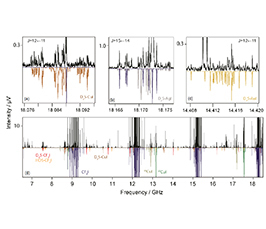The Art of Laser Ablation for Microwave Spectroscopy
CFEL Molecular Physics Seminar
- Date: May 20, 2016
- Time: 10:15 AM - 11:15 AM (Local Time Germany)
- Speaker: Chris Medcraft
- Newcastle University, United Kingdom
- Location: CFEL (Bldg. 99)
- Room: Seminar Room III, EG.080
- Host: Melanie Schnell

Balle-Flygare microwave spectrometers have used laser ablation sources for many years with great success. However, this combination has the significant downside in that one must know what products to expect from laser ablation. The complex chemistry occurring within the plasma generated by the laser can result in many different reaction products, many of which are unexpected. Additionally cavity based spectrometers required the source to be placed at the surface of a resonator mirror putting large constraints on the geometry of the laser and target. The chirped pulse microwave spectrometer in Newcastle has a frequency range of 7.5–18.5 GHz and was the first broadband spectrometer to employ a laser ablation source. The simpler geometry of the spectrometer and the design laser targets has allowed for much faster and easier acquisitions and the serendipitous study of some unexpected reaction products.
Laser ablation is especially useful for the study of molecules containing coinage metal atoms (copper, silver, and gold) as they are particularly hard to bring into the gas phase by other means. Presented here are the results from ablating targets of solid metal or metal foil (for gold) in the presence of H₂S and CF₃I to generate a series of hydrogen sulphide - metal iodide complexes (H₂S‐MI, M=Cu, Ag and Au). The analysis of their microwave spectrum and subsequent structural analysis has revealed interesting chemical physics in these near symmetric top molecules. Many organic compounds can also be very difficult to bring into the gas phase as heating can cause them decompose before they become volatile. Laser ablation can also cause decomposition, some preliminary results on the decomposition of urea will be presented as well as complexes of the nitrogen containing heterocycles imidazole and pyrazole.